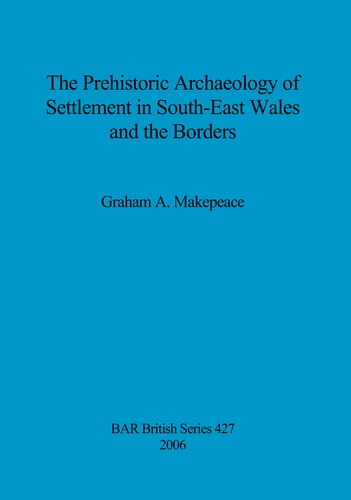

Most ebook files are in PDF format, so you can easily read them using various software such as Foxit Reader or directly on the Google Chrome browser.
Some ebook files are released by publishers in other formats such as .awz, .mobi, .epub, .fb2, etc. You may need to install specific software to read these formats on mobile/PC, such as Calibre.
Please read the tutorial at this link: https://ebookbell.com/faq
We offer FREE conversion to the popular formats you request; however, this may take some time. Therefore, right after payment, please email us, and we will try to provide the service as quickly as possible.
For some exceptional file formats or broken links (if any), please refrain from opening any disputes. Instead, email us first, and we will try to assist within a maximum of 6 hours.
EbookBell Team

4.4
42 reviewsThis research elucidates the character, distribution and extent of the archaeology relating to prehistoric settlement in the study area of south-east Wales, including the south-western part of Herefordshire. This has not only demonstrated the wealth and density of prehistoric activity-archaeology which has been found to exist in the region but it adds greatly to what already had been carried out previously. The sheer quantity of material, artefacts and sites now demonstrates how important this region was in prehistory. The region concerned covers an area of c. 3500sq km. It has been through the analysis of existing settlement sites, their distribution, topographical preferences, aspect and altitude which has enabled the author to locate new sites like those found in the Black Mountains (19 at present) where none existed before. Fieldwork has also demonstrated that the lowlands need to be examined closely as there is a far greater potential for new sites to be found in this landscape as exemplified by the new Rhadyr sites near Usk. A multi-disciplinary approach to all aspects of prehistoric activity in the region has enabled the author to create a new understanding of how the landscape was utilised during the prehistoric periods. The extensive Appendices contain all of the assembled material in a usable format, together with grid references and the location of sources. It is from this material and those mentioned in the text that the distribution maps have been compiled.